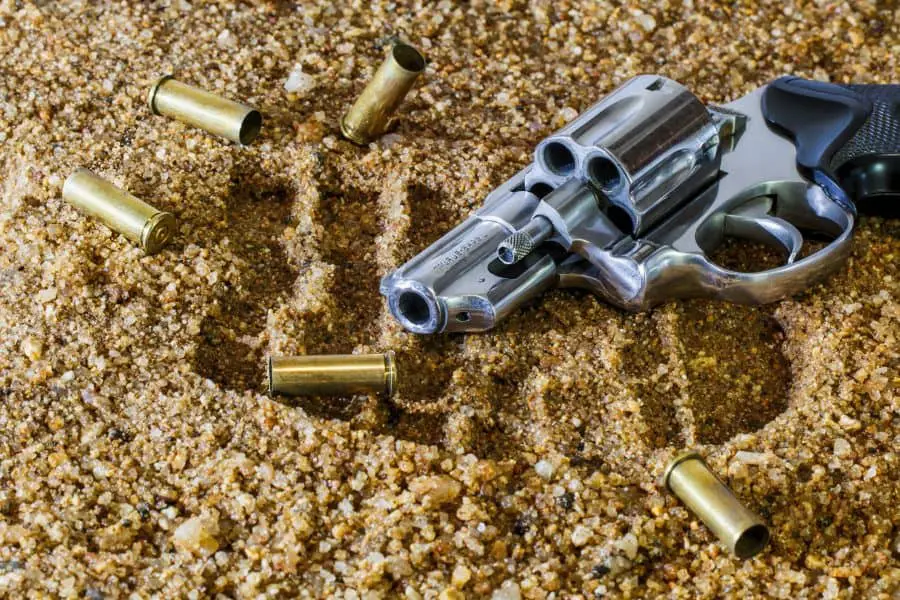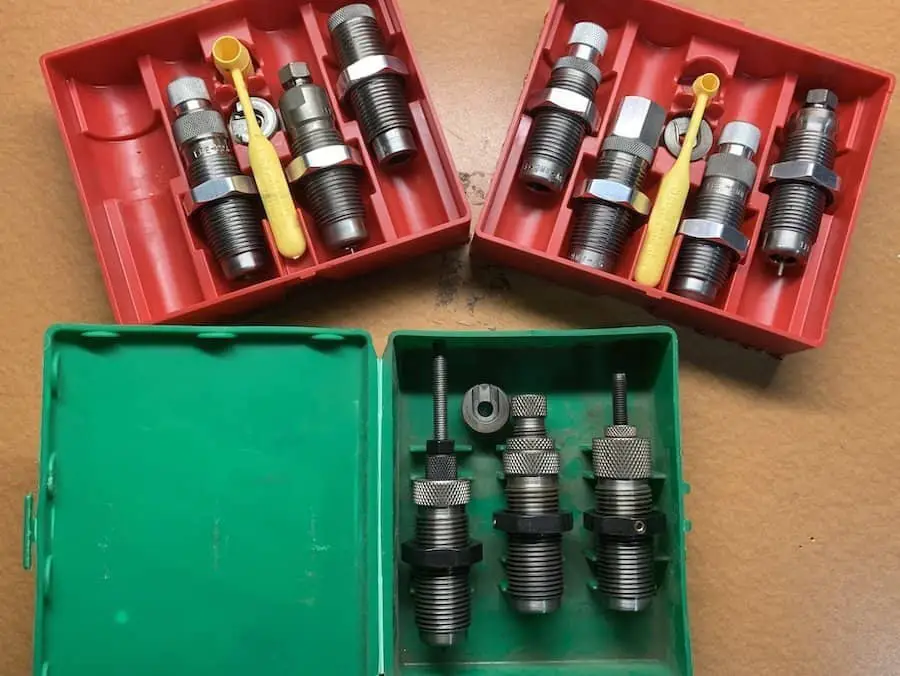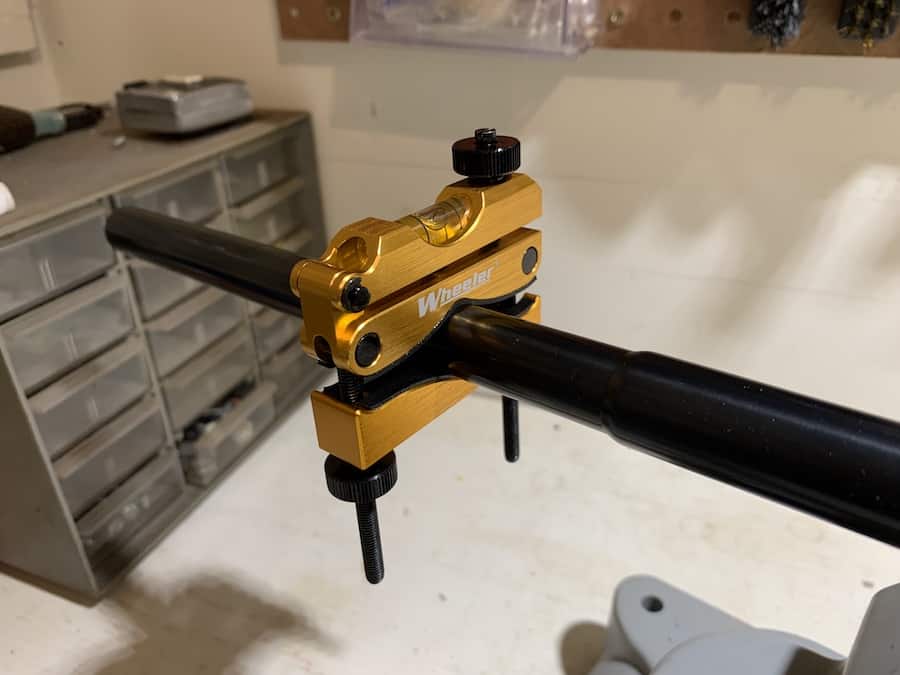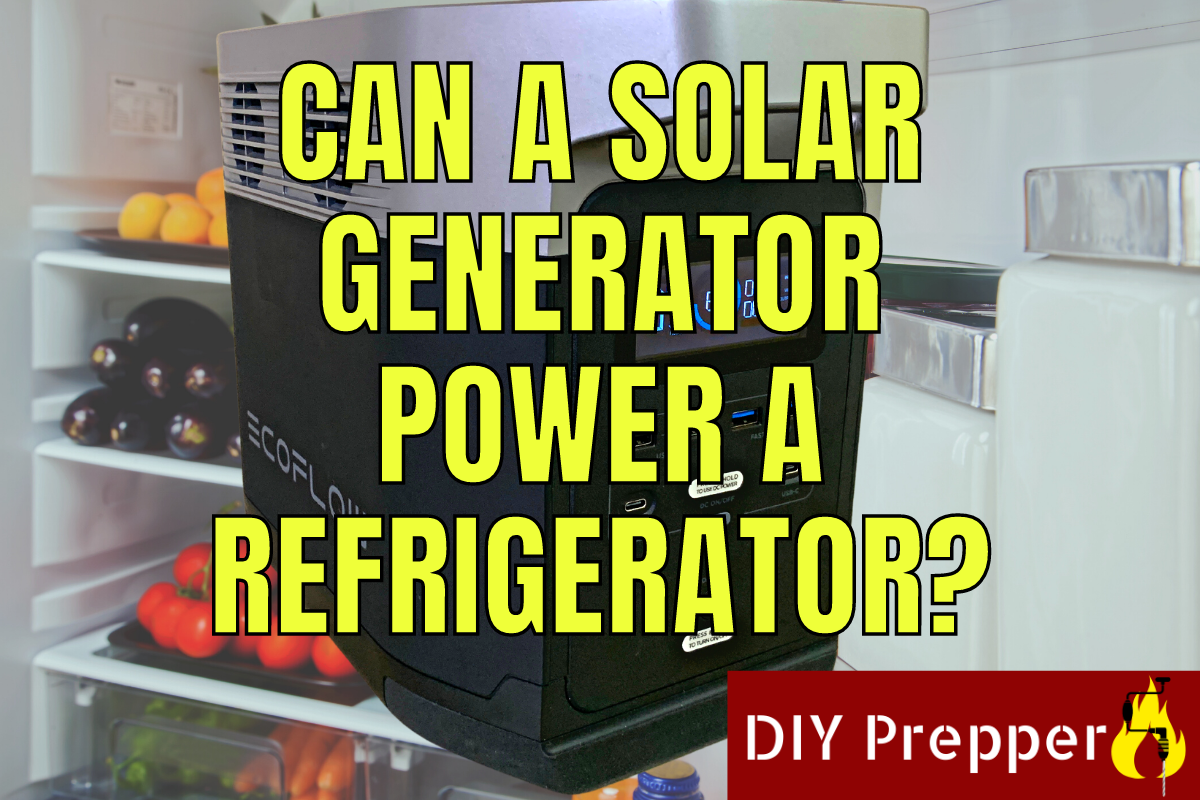How to Reload 9mm Ammo
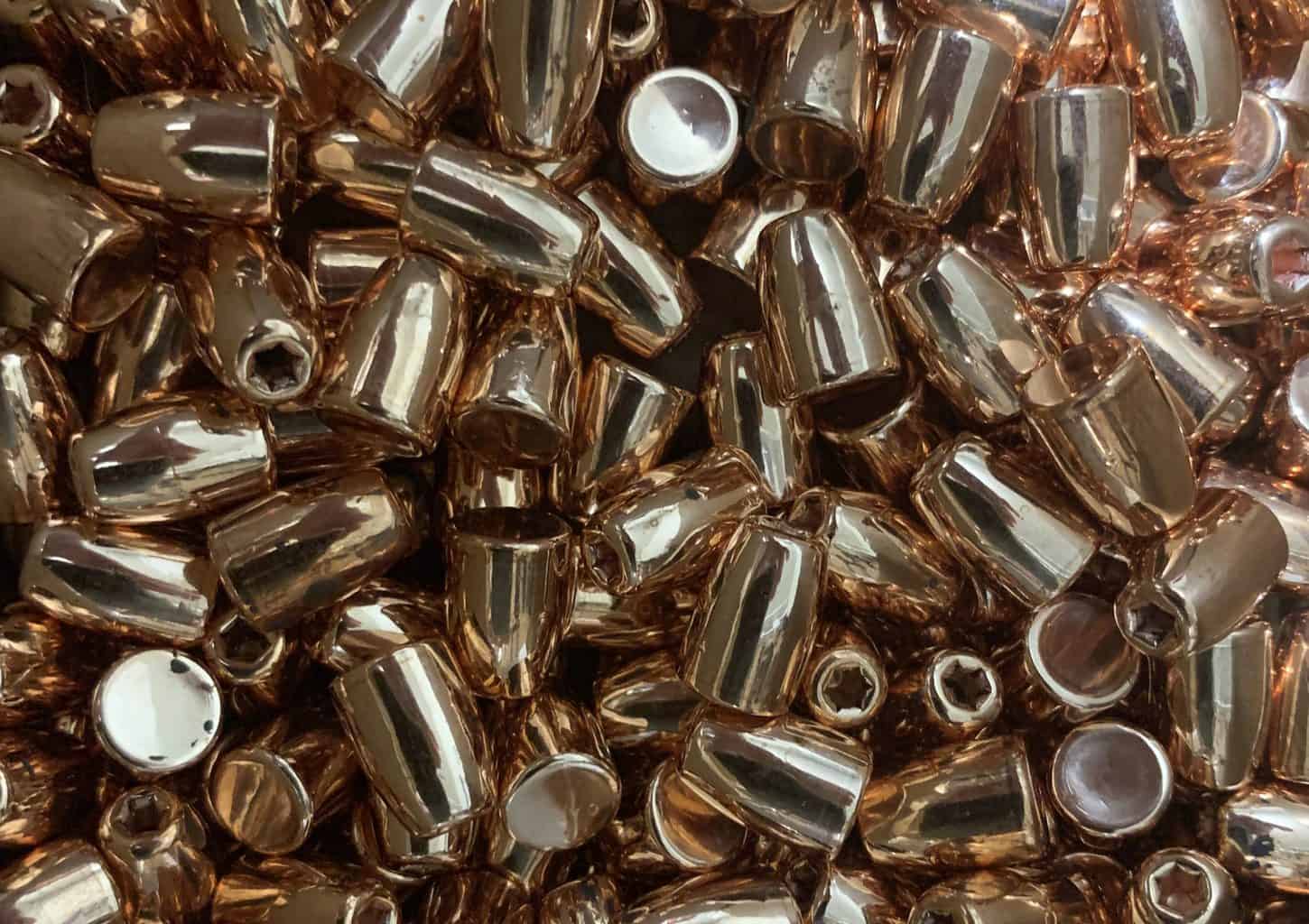
When I started reloading my own ammo, I was pretty comfortable reloading for rifles and revolvers. However, I was a little hesitant to reload ammo for my 9mm pistols. I wasn’t sure if my reloads would be as reliable as factory ammo or if it was even worth the trouble.
Reloading ammo for 9mm and other pistol calibers is no more difficult than reloading other types of ammunition. It is also very cost-effective, especially if you are loading rounds for defense.
This article will provide you with thorough step-by-step instructions for reloading 9mm ammo. You can also use this article as a guide if you are reloading other pistol calibers, such as .40 S&W and .45 ACP.
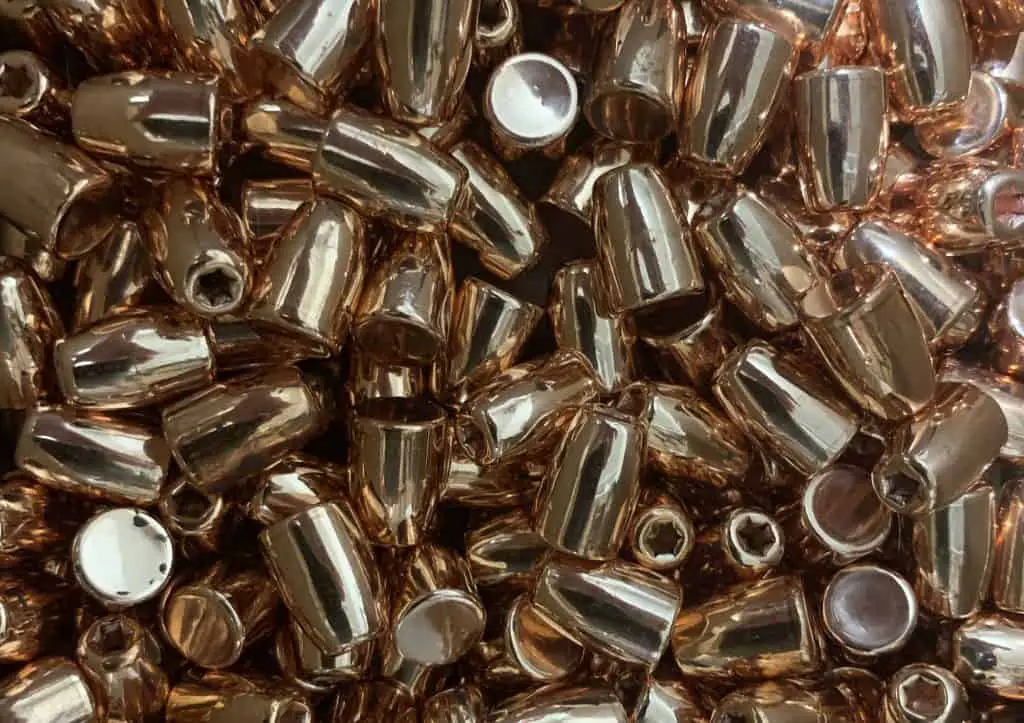
What You Need to Reload 9mm Ammo
If you are going to reload 9mm ammo, then you will need the right equipment. Here is what you will need:
Basic Reloading Equipment
Reloading ammo requires several tools. Fortunately, many of these can be used with many different calibers. I will include a list of these reloading essentials below, but for more explanation, check out my article, Essential Reloading Equipment, by clicking here.
- Reloading Press
- Reloading Manual
- Powder Measure
- Powder Scale
- Funnel
- Primer Pocket Brushes
- Case Tumbler or Ultrasonic Cleaner
If you are just starting out, buying a kit is the best way to get most of these items all at once. You can find my best picks for the best reloading presses and kits by clicking here.
Reloading Dies
You will need a set of caliber-specific dies for any caliber that you plan to reload. If you are reloading 9mm Luger then you will need to get a set of 9mm Luger dies.
I strongly recommend getting a 4-die set, such as this one by Lee. Sets like this include a full-length sizing die, an expander die, a bullet seating die, and a crimp die. Having these will allow to you perform all the steps that you need to create safe, reliable ammunition.
Case Gauge
A case gauge is simply a piece of metal that has been machined to reflect the proper dimensions of the caliber that you will be loading. Like dies, case gauges are caliber-specific.
Having a case gauge will allow you to quickly make sure that your resized brass cases, as well as finished rounds, are in-spec. You can find them by clicking here.
Calipers
You will need a set of calipers to measure the overall length of your reloads. Doing this will ensure that your bullets are seated to the proper depth.
Seating bullets to the proper depth is important whenever you reload but is especially important when reloading 9mm ammo. This is due to excessive pressures that can result when bullets are seated too far into a case.
Components
When you are reloading 9mm or any other type of ammo, you are adding different parts, or components, together to create a complete ammunition cartridge. Components include:
- Brass Cases
- Powder
- Bullets (These are the actual projectiles that travel out of a firearm’s barrel.)
- Primers
The brass cases that you use should be for the caliber that you are reloading. Other components can be found in your reloading manual.
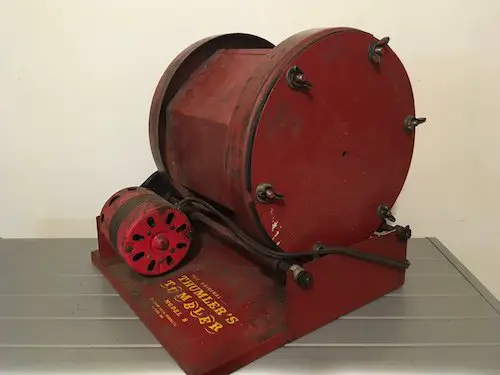
Clean Your Brass
The first thing that you will need to do when reloading 9mm ammo is to clean your brass. Cleaning your brass will help you spot potential issues and help ensure that your reloads cycle properly in your pistol.
I prefer to clean my brass by using a case tumbler and some ground-up corn cob media. While other methods may be faster or make the brass shinier, this will get the brass clean enough to cycle reliably and look good. Both rotary and vibratory case tumblers work fine.
Before you place your brass into the tumbler, try to remove as many cases as possible that could be of the wrong caliber or have defects. Cases that have noticeable cracks should be discarded as well.
Click here for reloading equipment and components from Natchezss.com
Sort Your Brass
After your brass is clean, check to make sure that all of the cases that you are going to reload are the proper caliber and don’t have any obvious damage.
Cleaning the brass will expose more potential flaws in your cases and can help you spot potential issues.
Resize the Cases
The next thing that you need to do to reload 9mm ammo is to resize your cases. Brass expands in a firearm’s chamber when it is fired. This is due to the pressures involved when the powder burns and propels the bullet forward. Resizing a case returns it to its original dimensions, helping ensure that it will cycle properly.
Insert the sizing die and shell holder into your press and calibrate it according to the instructions that came with your die. Your sizing die will likely have a decapping pin that will knock the old primer out while you are sizing the case. Make sure that it is set up properly as well.

If your die set didn’t come with instructions, try to find them on the manufacturer’s website or check out my other article, How to Set Up Reloading Dies, by clicking here.
If you are using a carbide sizing die you will not need to use case lube on the cases prior to resizing them. However, non-carbide dies do require you to lubricate cases prior to inserting them into a sizing die.
Most new-production sizing dies for pistol calibers do have a carbide insert. However, if you are unsure if your dies are carbide or not, check the documentation that came with your dies or contact the die’s manufacturer.
Insert a case into the shell holder and lower the press handle to raise the case into the die. Lower the handle all the way and raise it back up to remove the case from the die. The case should have been resized and should have its old primer knocked out.
Inspect the Cases
The next thing that you need to do when reloading 9mm ammo is to inspect your cases after they have been resized. I do this after each round rather than all at once when I am finished resizing.
I inspect my cases by using a case gauge to determine if they are in spec. Case gauges allow you to quickly determine if a brass case is too long, too short, or wasn’t properly sized. They do this much quicker than a pair of calipers.
To use a case gauge, simply insert the brass case into the gauge. It should fall right in without having to be pressed. The case rim should be at least flush with the case gauge but not go past the top of it. It should fall right out when the gauge is turned upside down.
I will generally toss any cases that are too long or short. Trimming pistol brass can get tedious really fast.

Expand the Case Mouth
The next thing that you need to do when reloading 9mm ammo is expand the case necks. Expanding the case mouths will create a slight “bell shape” that will allow the case to accept a bullet easily.
A case mouth should only be expanded enough to accept a bullet without shaving it. Over-expanding the case mouth can cause the brass to split or wear out faster. This will reduce the number of times that you can use that particular case.
Insert the expander die into your press according to the included instructions. As with the sizing die, if your dies don’t have instructions, check the manufacturer’s website or click here for my other article.
After setting up the expander die, insert a case into the shell holder and raise it into the die. You should feel a lot less resistance here than when you resized the case.
After you lower the press handle, remove the case from the shell holder and run your finger over the case. You should feel it curve slightly towards the end.
If the case is split or looks like a pair of bell-bottomed disco pants, your die is expanding the case too much. Back it out slightly. If the case isn’t belled at all you will need to insert the die a little further.
Note: Some expander dies, such as those made by Lee, are designed to allow you to charge the cases with powder as well. I wait to prime cases and charge them with powder until after I expand them. This prevents wasted components if a case neck splits.
Prime the Cases
The next thing that you will need to do to reload your 9mm ammunition is prime the cases. To do this, you will need a primer pocket brush, primers, and a priming tool.
I always like to remove any residue from my primer pockets before seating a new primer. This makes it easier to insert the primer. It also reduces the chance of a misfire due to something plugging the flash hole. (The flash hole is the small hole at the bottom of the case between the primer pocket and the rest of the case.)
Use your primer pocket brush to clean out the bottom of the primer pocket. Hold the case up to a light to make sure that nothing is blocking the flash hole. If there is something in there, use a straightened paperclip to remove it.
Primer Sizes and Types
Next, determine which size primer you need to use. 9mm ammo uses small primers, however, if you are reloading a different caliber check your reloading manual for the proper size. This is important for two reasons: A) You must use the correct size primer B) Many priming systems have both large and small rods or plugs to use, depending on the primer size you are using.
Another thing that you need to be aware of is that primers are also available as “magnum” primers. 9mm doesn’t use magnum primers, however others do. Always check in your reloading manual to make sure that you are using the correct size and type of primers.
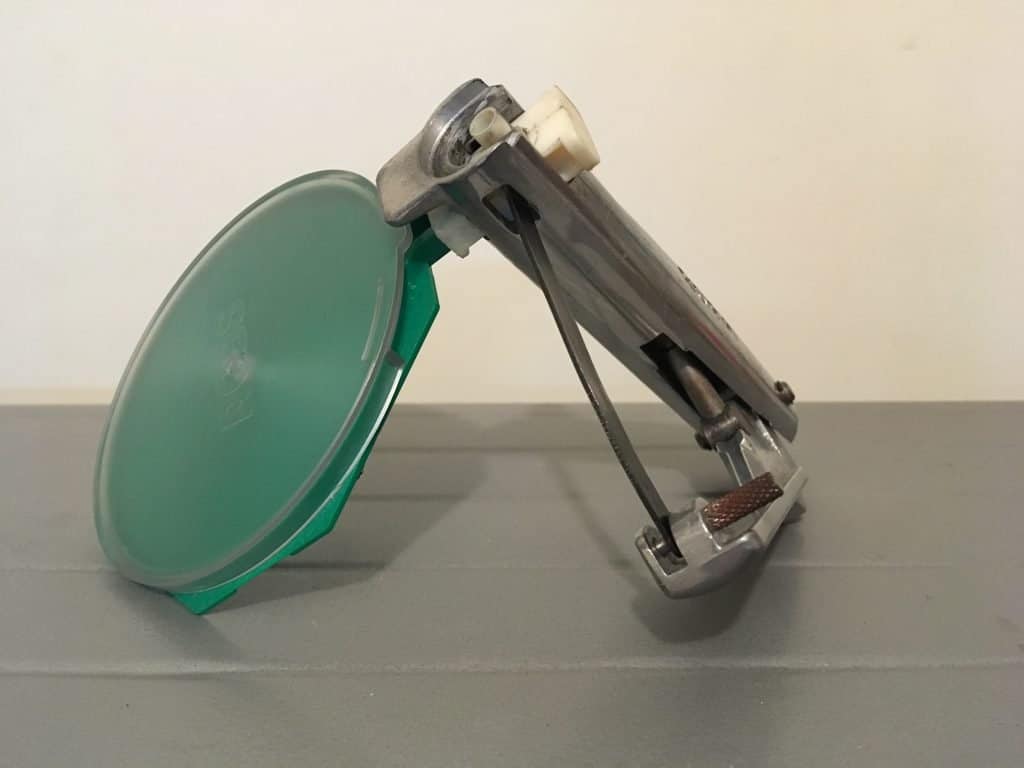
Using Priming Tools
Now set up your priming tool. The most common types are press-mounted and hand primers. I prefer hand priming since it is easier to feel if there is a potential issue. Since there are so many different priming systems available, follow the instructions that came with your reloading equipment.
Hand primers will use a tray that holds the primers before they are inserted into the brass. If using one of these, slide open a sleeve of primers. Place the tray tightly on top of the sleeve and turn them upside down. This should cause the primers to be flipped the proper way.
Primers must be inserted into cases the proper way. If using a primer tray, the flat side should be down while the cup side is facing up. You should be able to see the primer’s anvil, which look like a metallic three-leaf clover. If some of the primers are upside down, gently shake the primer tray. This will flip them the right way.
If you are using a press-mounted priming system it will probably use some sort of tube to feed the primers. Make sure that these are oriented correctly as well.
When priming the cases, take special care to seat the primer all the way into the case on the first attempt. Not doing so could cause the priming system to try to force a second primer into the primer pocket. This could, under the wrong circumstances cause the primers to detonate.
As you use your priming system, you will start to develop “a feel” for it. Figuring out what feels right doesn’t take too long but it does require practice.
A properly seated primer should be seated all the way into the primer pocket. You should be able to see that the top of the primer is just below the case head. Using your finger to check by feel is a good way to check as well.
Charge the Cases
After you prime your cases, the next step to reloading 9mm ammo is to charge the cases with gunpowder. Check your reloading manual to determine an appropriate powder to use with the bullets you are loading and how much of it to use.
I will not provide any load data but I will recommend that you use a powder that will fill the case as much as possible. This will help reduce the chances of double charges and squib loads.
You can learn more about double charges and other dangerous reloading mistakes by clicking here.
First, calibrate your powder scale. If you are using a balance beam-style scale, simply turn the adjustment knob until the line on the beam lines up with the line on the scale’s body. Scales like this work very similar to the triple beam balances you used in high school.
Electronic scales should be adjusted according to the manufacturer’s instructions.
After you calibrate your powder scale, pour the powder into your powder measure. Turn the adjustment screw to get it as close to your desired powder charge amount as possible.
Drop a few charges into the scale’s pan and pour them back into the measure. This will help things settle and give you accurate readings.
Drop another charge into the scale’s pan and weight it. Adjust the powder measure as needed.
If you are just starting out reloading, I recommend weighing each charge on your scale until you become comfortable with the process. In addition to helping you become more comfortable with weighing charges, it will also help you to be more consistent with how you use the powder measure, which will help you throw more consistent charges.
After you get your powder measure adjusted and use a scale to ensure its accuracy, use a funnel to help you pour the powder into the case.
Seat the Bullets
The next step to reload 9mm ammo is to seat the bullets onto case. Before you do this, find the cartridge overall length for the bullet you will be reloading in your reloading manual. Knowing the correct cartridge overall length (COAL) will help you to seat your bullets at the proper depth within the case.
Having your bullets set to the proper depth is important for all reloads, whether they are for pistol or rifle. However, it is especially important when reloading 9mm ammo. Having bullets set too far into the case can cause excessive pressures which could damage the firearm or cause injury.
After you know your cartridge’s overall length, set up your bullet seating die in your press. As with the other dies, follow the instructions that came with them. If you don’t have instructions, check the manufacturer’s website or click here to read my article, How to Set Up Reloading Dies.
Setting up the die will involve two things: A) Inserting the die into the press properly and B) Setting the bullet seating plug to the proper depth.
Adjusting Bullet Seating Depth
After the die is correctly installed into the press, back out the die’s seating plug by unscrewing it several turns. Place a bullet on top of a case and raise it into the die.
Turn the seating plug until you feel it stop. This means that the plug has touched the top of the bullet.
From there, remove the cartridge (assembled bullet, brass, powder, and primer) from the die and screw the seating plug in one full turn. Run the cartridge through the die again.
Now, use a pair of calipers to determine the cartridge’s overall length from the case head to the tip of the bullet.
If you backed the seating plug out, the cartridge is probably going to be much longer than it needs to be. Turn the seating plug screw some more and try again. The cartridge should be shorter since the plug pushed the bullet deeper.
Continue this process until the bullet is set to the proper depth. As you get closer to the desired depth, make smaller adjustments to make sure you don’t overdo it. Pushing a bullet deeper into a case is much easier than trying to back a bullet out slightly.
Note: When seating bullets, I like to do this as soon as I charge a case with powder. Many people like to charge all of their cases at once and then seat the bullets. I like to charge and then immediately cap since it reduces the chance that I will miss a case and not put powder into it.
Apply a Taper Crimp
After you seat all of your bullets onto the cases, the next thing that you need to do to reload 9mm ammo is to apply a taper crimp to your reloads. This is a finishing touch that will help ensure that they function reliably.
A taper crimp removes the belled case mouth created when running the case into the expander die earlier in the reloading process. This helps the rounds to chamber easier, reducing the chances of a feeding error.
My favorite crimp die is the Lee Factory Crimp Die. It is easy to set up and use and is available in most calibers. It is easy to set up and use.
Set up your taper crimp die according to its instructions and run each case that you have reloaded into it. You can use a case gauge to check if you have applied a sufficient crimp. Simply drop the cartridge into the gauge. If it falls all the way in and falls back out when turned over then it is good to go.
After you have applied a taper crimp to your rounds, then you should be ready to test fire your newly-reloaded 9mm ammo.

